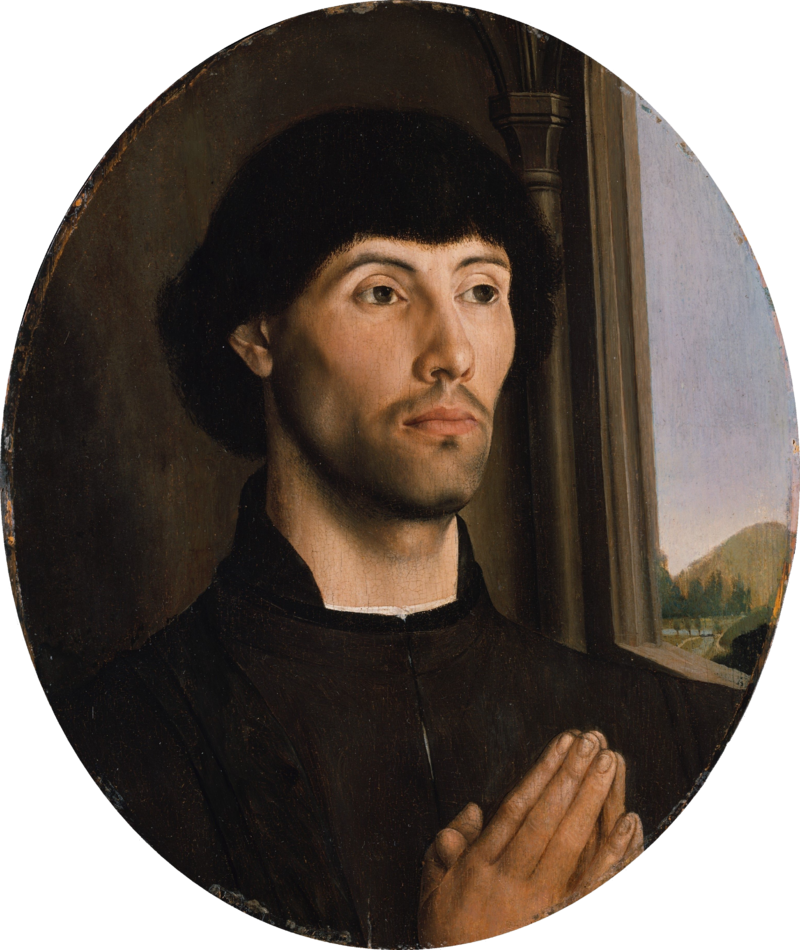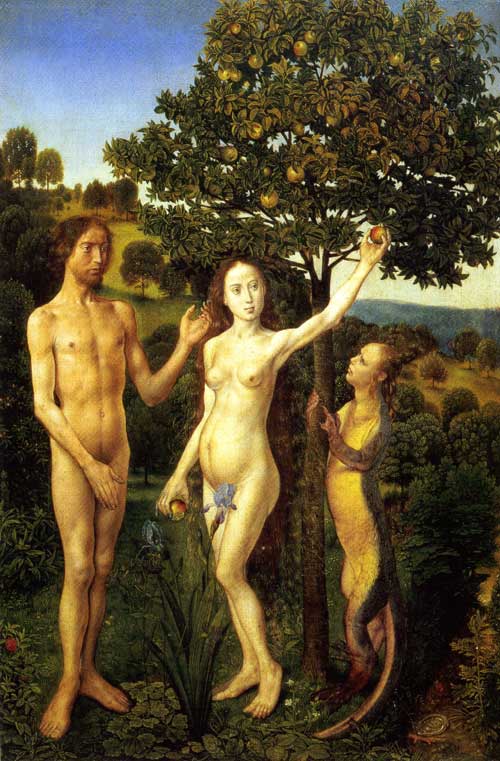Hugo Van Der Goes (1440-1482)
Considering that Hugo Van Der Goes is known to be one of the most influential artists in northern Belgium, most of his life remains unknown due to his short life span of 42 years. Yet, Goes’ career is still well established through pieces such as the “Adoration of the Kings” and “Portinari Altarpiece”.


Goes uses proportion to bring focus to Virgin looking down on baby Jesus, who is highlighted in a golden hue.
Hugo Van Der Goes is an early renaissance painter who specializes in flemish paintings. All of Goes’ pieces share one common theme of Christianity, as most of his pieces were commissioned by the Roman Catholic “City of Ghent”. What makes Goes’ style authentic is his limited colour choice in his paintings. In the transition between late gothic to early renaissance, viewers can see that most of Goes’ paintings are dark in colour. That is because Goes uses certain colours to highlight his symbolism. Blue would be used to show purity, red to show holy spirit and white to represent goodness. Goes does a good job at storytelling, allowing his viewers to gain a better understanding of the meaning of his paintings through hidden messages.

From his paintings, I can tell that Hugo Van Der Goes was a well educated artist with a good understanding of the Christian religion. Goes knew how to tell a story through his art. What made his style particularly interesting was although Goes was known to take a certain realistic approach to his figures, Goes also experimented with his work by diverting away from reality and seeking the immortal. In most of his well recognized pieces such as “The Fall” and “The death of the Virgin”, he includes drawings of angels, and animocaputs.


In the centre is a bed where the Virgin lies, dressed in pure colours. Surrounding her are twelve chief disciples, whose faces express sadness and despair. Yet, above the virgin is a yellow circle, representing light, and in the circle are Christ and angels waiting for Virgin’s soul to follow them up in heaven.
Sources:
https://www.wikiart.org/en/hugo-van-der-goes/the-adoration-of-the-kings-monforte-altar
https://www.italian-renaissance-art.com/Van-der-Goes.html
http://www.visual-arts-cork.com/old-masters/hugo-van-der-goes.htm